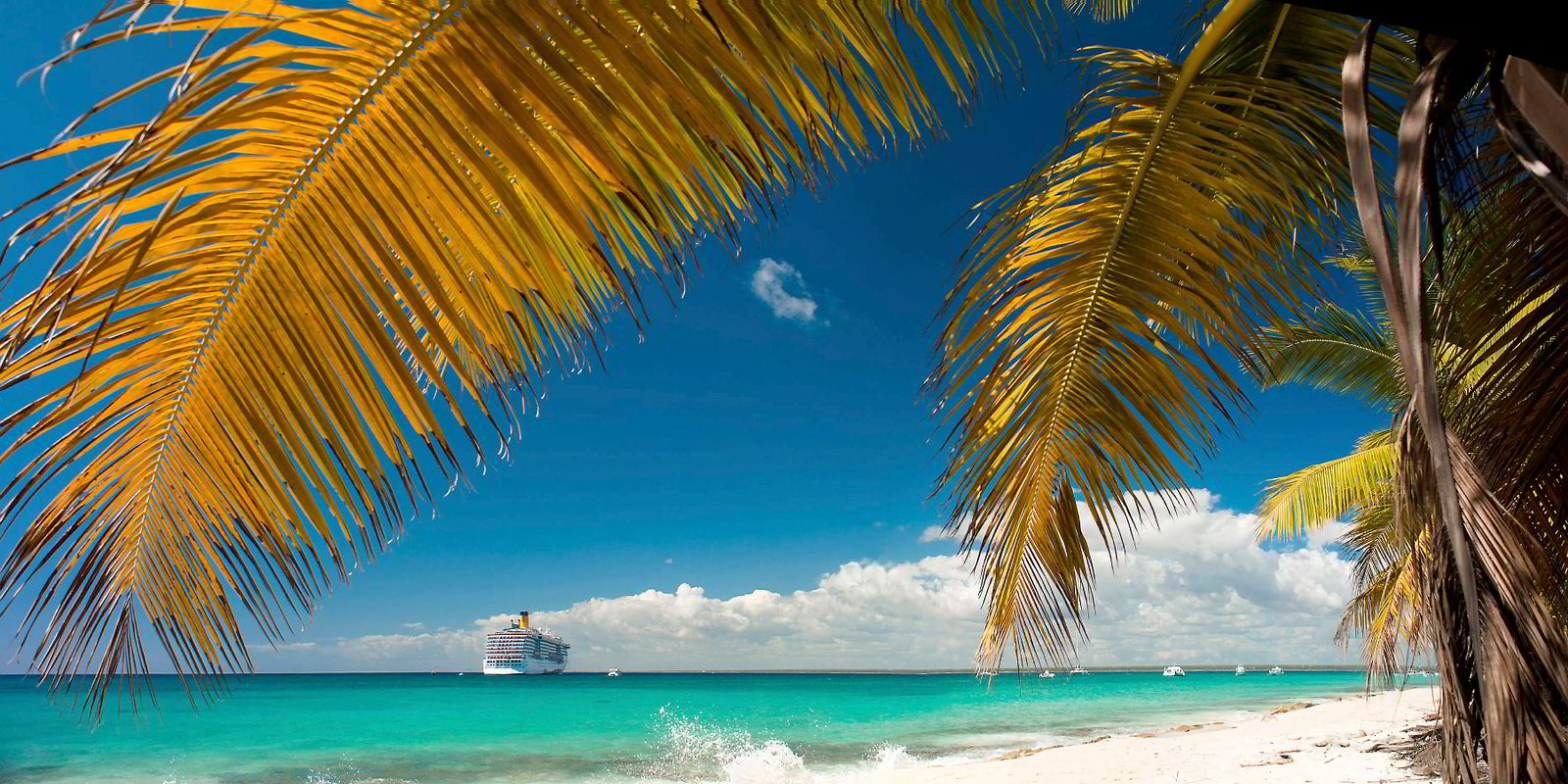Demand and pricing (not to mention confidence) are high, with the industry looking forward to a bumper year as it continues its push into new markets, writes Eric Martin.
Capacity growth looks modest, advanced bookings are at historic heights, demand is stronger and pricing is rising. With the information at hand today, the cruise majors are charging into what they expect to be a strong year.
Investors are feeling it too, with shares of Royal Caribbean Cruises, Norwegian Cruise Line and Carnival Corp near 12-month highs at the time of writing, after recovering from a slump that lasted much of 2016 while demand looked jittery.
“As we look at 2017, both booking volumes and pricing are well ahead of 2016 levels,” says Roger Frizzell, chief communications officer at Carnival, the world’s largest owner of cruiseships, with a fleet of 102 and 19 newbuildings.
“We’ve really done well in the Caribbean, and we are projecting higher yields and increased capacity at higher prices across the board.”
He says ticket prices have improved in North America and the Caribbean, as well as Europe and Asia.
That, Frizzell explained, is a result of rising demand and the industry’s restraint on capacity growth. But he also says the improvements are a result of the sector’s decisions about where to deploy its ships, and the majors’ rising interest in moving vessels into the China market has helped elsewhere.
“The industry, including our corporation, has done a good job determining where throughout the world it can put its capacity,” he said. “China certainly helped in that area because as companies, including ourselves, put capacity into China, that has given some relief to the Caribbean.”
Royal Caribbean president and chief operating officer Adam Goldstein, whose company is the second-largest, with 45 ships across several subsidiary brands, strikes a similar tone. His company is optimistic about all the key source markets that provide passengers to the industry.
He points to the key Caribbean market, where many of the cruiseships docked not far from his company’s headquarters in PortMiami are headed, and where capacity growth is in the mid-single-digit percentage points.
“The US market, including cruising to the Caribbean, but also very much including cruising to Europe, here in 2017 is robust,” he told TradeWinds at his office.
The number of global cruise passengers is expected to rise by 4.5% this year to 25.3 million, according to the Cruise Lines International Association (CLIA), a trade group — slightly higher than last year’s 4.4% growth rate.
A CLIA survey showed that eight out of 10 travel agents are expecting higher sales this year. New markets, particularly China, are fuelling ambitions to penetrate untapped markets filled with potential passengers who are not only new to cruise, but who may have barely considered it as a travel option and have money to spend as their economies grow and become more consumer-driven.
Yet in North America, for long the largest provider of customers to the cruiseship industry (with the US alone providing 11.3 million passengers) additional growth potential continues to beckon, as the percentage of people choosing cruise for their holidays continues to be small relative to the total travel market.
That represents both an opportunity and a challenge.
Goldstein says the vast majority of travellers still prefer land-based vacations. “Cruising, incredibly still today, after almost 50 years of marketing and selling efforts in the United States of America, still hasn’t managed to reach millions of people who have the wherewithal to cruise and would love it if they did,” he said.
“And this is not withstanding the fact that almost everybody who fits into that category now has relatives and friends who are telling them that it’s a great idea, and still they haven’t done it.”
Plenty of return customers
He says the industry is still reaching those potential newbies step by step, and it is successful in getting people to come back once they have gone on their first cruise.
Uncertainties remain. After all, many of last year’s demand challenges were driven by events that the industry couldn’t plan for, such as the terrorism threat that is driving lines away from Turkey.
Geopolitical risk cannot be ruled out this year either. But Norwegian Cruise Line Holdings chief executive Frank Del Rio told investors recently that the geopolitical environment has been calmer since the US election, particularly as the industry entered the so-called Wave season, the most important booking period of the year.
“Since the beginning of the year, business has really taken off and has been the most robust since the financial crisis some 10 years ago,” he said.
Excluding the impact of the company’s first ship in China, Del Rio said the world’s third-largest cruiseship owner’s forward bookings are better than this time last year and at better prices.
Despite tumult in European markets, occupancy booked so far this year at Carnival is in line with last year’s levels, says Frizzell, but the prices are higher.
The company is no longer selling cruises to Turkey, but that could change.
“The thing that I think is so attractive about cruising is that our assets are mobile, so we can make determinations on where to move our assets based on what’s happening anywhere in the world, unlike hotels and beaches,” Frizzell said.
Further east, he acknowledges that there have been some yield constraints in China after the introduction of new ships in that market. But he says that should be temporary, given the country’s vast growth potential.
For the cruise majors, with their focus increasingly on larger ships built on a conservative timetable, it is the capacity growth picture that presents the surest signs for the future.
The CLIA estimates that 13 ocean ships are scheduled for delivery this year. That represents just 4.9% of the global fleet, but the figure includes smaller vessel classes, in which the growth rate is higher, and does not factor in vessel retirements.
Longest orderbook ever
The cruise orderbook is the longest it has ever been: at year-end there were 80 cruiseships on order through to 2026.
In recent weeks, Norwegian Cruise Line Holdings added to the mix with a huge order for four 140,000-gt ships, plus options for two more, at a cost of EUR 800m ($844m) apiece. But those ships don’t start to hit the market until 2022, and the options stretch out to 2027.
With a limited number of shipyards able to build full-size cruiseships, little could change the annual capacity growth rate for large, mass-market cruiseships for the next few years, experts say.
But further into the future, that may change.
Carnival, Italian shipyard Fincantieri and China State Shipbuilding Corp (CSSC) have finalised a deal to build the first two cruiseships ever constructed in China, at CSSC’s Shanghai Waigaoqiao Shipbuilding. The first delivery is in 2023. The agreement includes options for four more.
But the major cruiseship owners say they, and the industry, are committed to keeping the pace of newbuilding growth limited.
“The amount of ordering that we’ve done… is completely consistent with the moderate growth profile that we’ve touted for all these years,” said Goldstein of Royal Caribbean’s orderbook.
“We think we can grow the two big brands [Royal Caribbean Inter-national and Celebrity Cruises] at a pace that’s appropriate for their prospects. And then we’ll see what other types of opportunities arise.”




